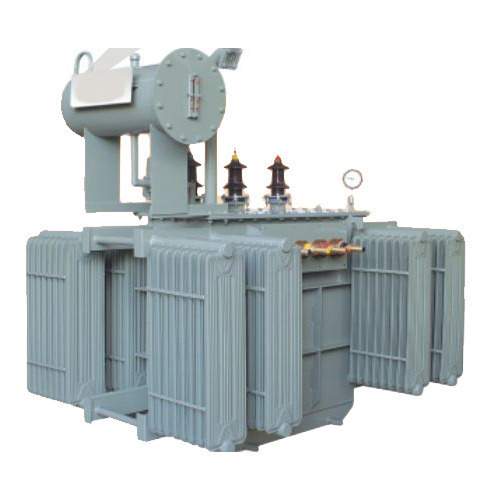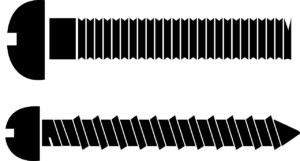A Detailed Guide On How To Replace A Furnace Transformer
The word “Furnace Transformer” may appear to be intimidating. Even it somewhat sounds similar to a new transformer movie, but the fact of the matter is that this device offers a primary function for any type of furnace. If you learn or have knowledge about all the types of transformers, you will surely be able to get a closer understanding of the transformers in a furnace one!
Suppose you prefer to work on a transformer, or just tutoring yourself on the subject, or are just keen about to know. In that case, the following information we elucidated below about the furnace transformers will surely help you to achieve your goals. In this blog today, we are elucidating everything to know about the furnace transformers and the ultimate guide to replace the furnace transformers carefully. Additionally, it will also provide you with a more insightful look at how furnaces work and function.

Meaning of a Furnace Transformer:
The essential purpose or function of the furnace transformer is to conduct power to the furnace itself. This can reduce the high voltage capability to a lower voltage output. It is needed for Arc furnace procedures. It can also observe that some furnaces may require 24 volts to operate. It is meant for the furnace’s fundamental control, including timers, circuitry, ignitions, and temperature controls. Considering the standard voltage output for any house is 120 volts, the transformer will lower the home’s voltage to the exact accurate amount for usage or application in the furnace. The voltage on some furnaces may differ, which may include electric and gas furnaces.
How Does A Furnace Transformer Work?
Furnace transformers manufacturers also assist in understanding the internal mechanics of a transformer. It is composed of two modes that make up the furnace transformer wiring. The first mode is for the conduction or supply of voltage, and the other method is for the secondary voltage. If you are having strain or some difficulty with the transformer, you may require to deal with these two modes’ internal circuits or wirings.
A faulty or damaged wire could be the reason for a furnace malfunction. Therefore it is essential to check these wires accurately. The conventional or standard transformers that carry 120 volts must have supply wirings that are black and white. However, some colors may differ based on the furnace model. It is best to consult and take advantage of the manufacturer’s instructional guide if you do have them on hand.
But if you don’t, here’s what you should do:
The usual arrangement of the wires is neutral and live wires.
The color black generally be of the live wire, and the white wire must be neutral. You can review these wires separately by using a voltmeter. The black lead is utilized to test and analyze the black wire, and the red information is utilized to measure and test the white wire.
Based on the volts of the transformer, you must get the identical reading on the voltmeter. If it does not provide you with any readings, it indicates that something is wrong with the wiring.
Correct And Complete Maintenance Creates A Difference:
From time to time, you must observe the need to offer or work on your furnace maintenance. It may sometimes involve the transformer as well. As discussed before, checking and reviewing the transformer wirings can be a part of troubleshooting and proper or complete maintenance. If a wire is worn or even ripped and damaged, then you should replace it.
Check The Secondary Voltage:
You can also check and verify the secondary voltage as part of the maintenance checkup. Checking and verifying the secondary voltage is the same method as testing the supply voltage. It may get complicated and difficult throughout this method as the colors will differ a bit more. The typical and most common colors for the secondary voltage are red and blue.
At this point, it is impracticable to follow the manufacturer’s directions to find out what each wire does.
You will then follow similar steps with the voltmeter by testing and verifying the red head towards the red wire and the black head toward the blue wire. In case the voltmeter does perform and does not provide you reading then, all you require to do is replace your furnace transformer.
Understanding The Concept Of The Furnace Transformer Housing:
Before you initiate the transformer replacement, do ensure that you know the house voltage’s inner functioning. The supply and secondary voltage are also be referred to as the primary and secondary coil. These both coils are wrapped around a metallic core. It improves and advances the overall supply or conductivity of the voltage.
The primary coil’s purpose/function is to generate magnetic lines of power as the current alternates and alters directions.
Electricity is produced into the secondary coil by the magnetic lines passing by and offering the transformer’s output. If you want to improvise and optimize your transformer, you should utilize a magnetized core.
Steps To Replace A Furnace Transformer:
The extremely crucial thing to do before succeeding further with the replacement is that you must turn off all power supply or connectivity leading to the furnace. Even you can turn off the power at the circuit breaker.
- The first thing to keep looking for is to turn off the power. It is quite the most important thing to be kept in mind and check twice or thrice times if the power is truly in the off position whenever you start working with any electrical work.
- Once you are confident that the power is off, you may initiate to open the furnace cover and find the transformer.
- You do make the use of wire-cutters to cut the four wires attached to the transformer.
- The next step is, you can utilize a screwdriver to detach and lift the transformer. Also, you may require a socket wrench based on its fittings.Now, connect it to the new transformer. Do make sure that you read the guidance carefully of the new transformer that came with instructions.
- Remember to join the correct wires for all the supply and secondary wirings.
- Also, you can do make use of the old wirings as a guide. After you are completed using the old wirings as guides, you can link the new ones to the furnace.
- You can utilize wire nuts to accomplish this process.
- Finally, trial and test the recently installed transformer with a voltage tester.
- Remember to switch the power back on at the circuit breaker. Replace the furnace cover, and you should be finished.







